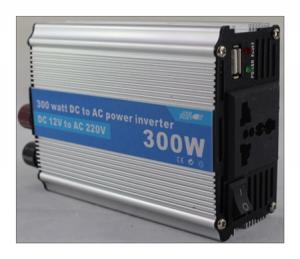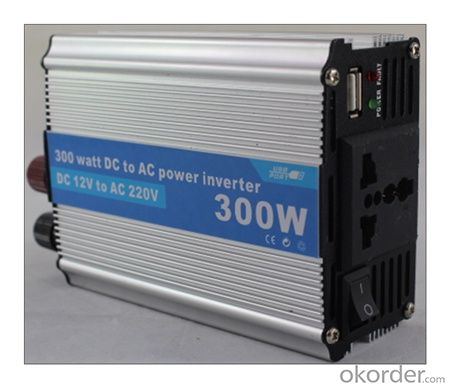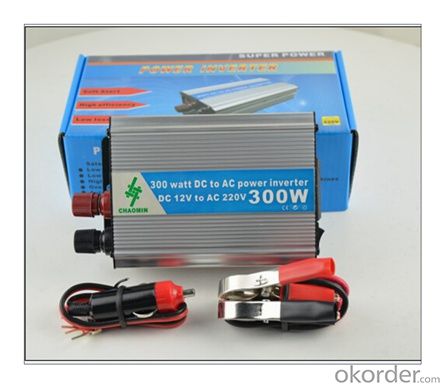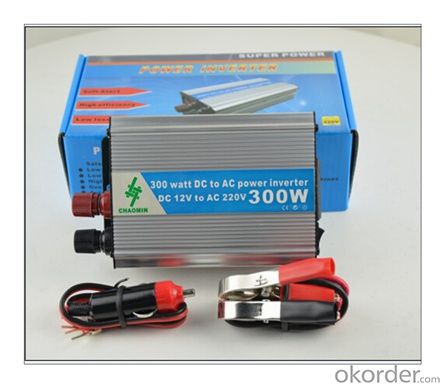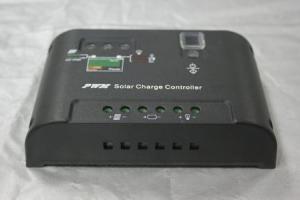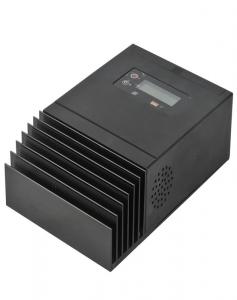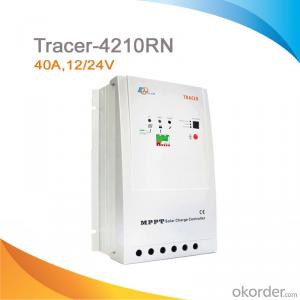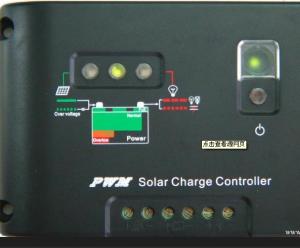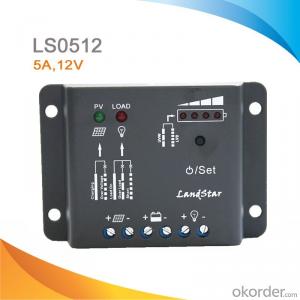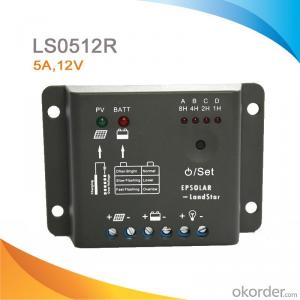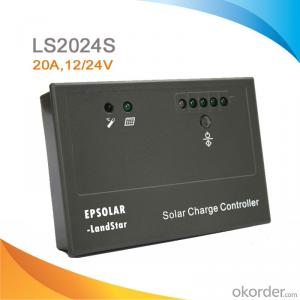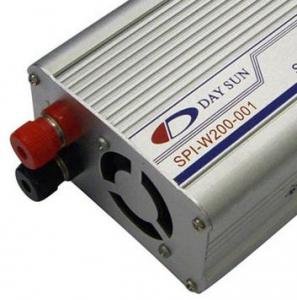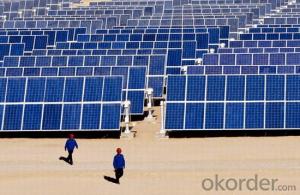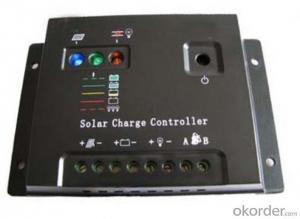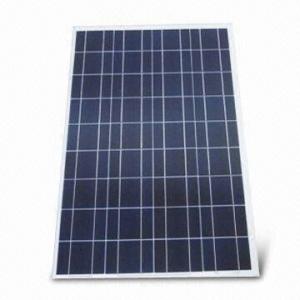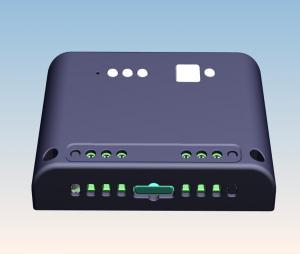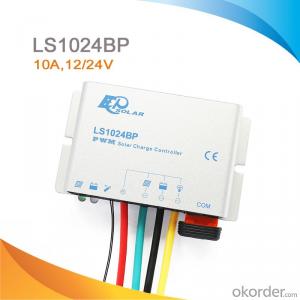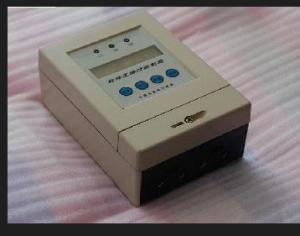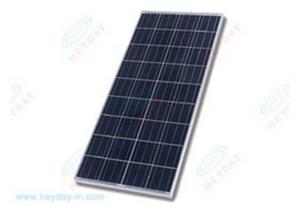Solar Sprinkler Controllers - High Quality Useful 300W Solar Charging Discharging Controller
- Loading Port:
- China main port
- Payment Terms:
- TT or LC
- Min Order Qty:
- 100 unit
- Supply Capability:
- 10000 unit/month
OKorder Service Pledge
OKorder Financial Service
You Might Also Like
1, Product desciption
Inverter circuits designed to produce a variable output voltage range are often used within motor speed controllers.
The DC power for the inverter section can be derived from a normal AC wall outlet or some other source. Control and feedback circuitry is used to adjust the final output of the inverter section which will ultimately determine the speed of the motor operating under its mechanical load.
Motor speed control needs are numerous and include things like: industrial motor driven equipment, electric vehicles, rail transport systems, and power tools. (See related: variable-frequency drive ) Switching states are developed for positive, negative and zero voltages as per the patterns given in the switching Table.
The generated gate pulses are given to each switch in accordance with the developed pattern and thus the output is obtained.
2, Features of the product
Inverters convert low frequency main AC power to higher frequency for use in induction heating.
To do this, AC power is first rectified to provide DC power. The inverter then changes the DC power to high frequency AC power. Due to the reduction in the number of DC Sources employed, the structure becomes more reliable and the output voltage has higher resolution due to an increase in the number of steps so that the reference sinusoidal voltage can be better achieved.
This configuration has recently become very popular in AC power supply and adjustable speed drive applications. This new inverter can avoid extra clamping diodes or voltage balancing capacitors. There are three kinds of level shifted modulation techniques, namely:
The first thing to figure out is the length of road in need of street lights.
This can be a small entrance road only a couple hundred of feet long to miles of streets through an area. Does the area currently have any type of lighting available.
What is the reason for needing street lights in this area
Is the electrical grid already nearby or would you need to call in the power company to bring in electrical lines.
If the electric needs to be brought to the area, how much is this going to cost? Depending on how far the grid electric is from the location of the needed lighting, this can be quite expensive.
How much lighting is needed on the street? Do the lights need to be dark sky compliant.
Do the street lights need to run from dusk to dawn or for only a specified number of hours at night.
Are the street lights able to dim in the middle of the night and still provide enough lighting.
These questions need to be answered before you can decide on how many lights you will need to complete the project.
3, Product Image
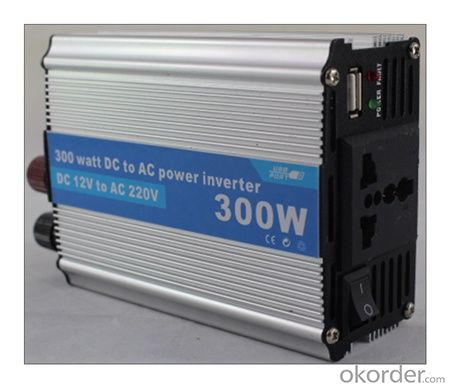
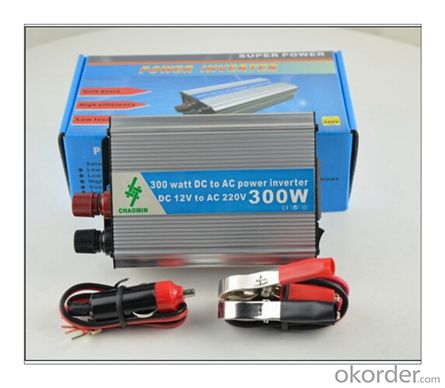
4, Detailed Specification
Specification:
Model | Tracer |
Rated system voltage | 12/24V auto work |
Rated battery current | 40A |
Rated load current | 20A |
Max.battery voltage | 32V |
Max.PV open circuit voltage | 100VDC |
Max.PV input power | 12V 500W, 24V 1000W |
Self-consumption | <10mA(24V) |
Charge Circuit Voltage Drop | ≤0.26V |
Discharge Circuit Voltage Drop | ≤0.15V |
Communication | TTL232 / 8 pin RJ45 |
Temp.compensation | -5mV/℃/2V |
Working temperature | -35℃~+55℃ |
Storage temperature range | -35℃~+80℃ |
Humidity | 10%-90% NC |
Enclosure | IP30 |
Altitude | ≤3000m |
Dimension | 242mm x 169mm x 91mm |
Mounting holes | 180mm x 160mm |
Mounting hole size | Φ5 |
Terminal | 25mm2 |
Weight | 2.05kg |
- Q: Can a solar controller be used with a solar-powered off-grid community?
- Yes, a solar controller can definitely be used with a solar-powered off-grid community. A solar controller is an essential component in solar power systems as it helps regulate and optimize the charging and discharging of batteries, ensuring efficient utilization of solar energy. In an off-grid community, where solar power is the primary source of electricity, a solar controller would play a crucial role in managing the power flow and maintaining the battery health, making it an essential component for the community's energy system.
- Q: Can a solar controller be used in a solar-powered electric wheelchair charging system?
- Yes, a solar controller can be used in a solar-powered electric wheelchair charging system. A solar controller helps regulate the power flow from the solar panels to the battery, ensuring efficient and safe charging. It can manage the charging process, prevent overcharging or undercharging, and maximize the battery lifespan. By using a solar controller in a solar-powered electric wheelchair charging system, the system can effectively harness solar energy and provide a reliable source of power for charging the wheelchair.
- Q: What is the maximum voltage drop allowed between the solar panels and the batteries?
- The maximum voltage drop allowed between the solar panels and the batteries depends on several factors, including the type and capacity of the batteries, the distance between the panels and the batteries, and the efficiency of the charging system. In general, it is recommended to keep the voltage drop as low as possible to ensure efficient charging and minimize energy loss. A commonly accepted guideline is to limit the voltage drop to around 3% to 5% of the total system voltage. For example, if the batteries are 12V and the solar panels are connected in a 24V system, the maximum voltage drop should be around 0.36V to 0.6V (3% to 5% of 12V). To achieve this, it is important to use appropriately sized wires with low resistance, minimize the distance between the panels and the batteries, and consider using voltage regulators or charge controllers to optimize the charging process. It is important to consult the manufacturer's guidelines and specifications for both the solar panels and batteries to ensure the voltage drop remains within the recommended limits.
- Q: Can a solar controller be used with a solar-powered internet connection?
- Yes, a solar controller can be used with a solar-powered internet connection. A solar controller is designed to regulate the flow of energy from solar panels to a battery, ensuring efficient charging and preventing overcharging. In the case of a solar-powered internet connection, the solar controller would manage the energy flow from the solar panels to power the necessary components of the internet connection system, such as routers or modems.
- Q: Can a solar controller be used with solar-powered indoor food preservation systems?
- Solar-powered indoor food preservation systems can utilize a solar controller to regulate battery charging and discharging. The solar controller, a device that manages the flow of power in a solar power system, ensures efficient battery charging and safeguards against overcharging or overdischarging. In the context of solar-powered indoor food preservation systems, the solar controller plays a critical role in power management. By monitoring battery voltage and adjusting the charging process accordingly, it maximizes the utilization of solar energy. This optimization guarantees that the batteries consistently maintain their optimal charge levels, resulting in enhanced system efficiency. Furthermore, the solar controller offers valuable insights into the system's performance, including battery status, charging current, and voltage. This information aids in assessing the system's overall health and facilitates any necessary adjustments or repairs. In conclusion, the solar controller is a vital component of a solar-powered indoor food preservation system. It ensures efficient power regulation and optimization, leading to optimal operation and prolonged battery lifespan.
- Q: Can a solar controller be used with solar street lights?
- Indeed, solar street lights can utilize a solar controller. Referred to as a charge controller, a solar controller is a crucial element within a solar power system, responsible for managing the electricity flow between the solar panels and the batteries. Its primary function is to ensure efficient battery charging while safeguarding against overcharging or battery damage. For solar street lights specifically, a solar controller becomes indispensable, as it plays a pivotal role in regulating the charging and discharging processes of the batteries that supply power to the lights. By optimizing battery performance and lifespan, the solar controller ensures the effective and reliable operation of solar street lights.
- Q: How does a solar controller handle reverse current protection?
- A solar controller handles reverse current protection by utilizing diodes or solid-state devices that prevent the flow of current from the battery back into the solar panels when they are not generating electricity. This helps protect the panels from potential damage and ensures the battery remains charged properly.
- Q: Can a solar controller be used with a mobile solar setup?
- Certainly! A mobile solar setup can indeed utilize a solar controller. When it comes to solar power systems, including mobile setups, a solar controller is an indispensable component. Its primary role is to regulate the electricity flow from the solar panels to the battery bank, ensuring optimal charging while safeguarding against overcharging or battery damage. The significance of a solar controller is further amplified in mobile solar setups, such as those found in RVs, boats, or portable power stations. It plays a vital role in maintaining a stable power supply, shielding the batteries from overcharging or discharging, and maximizing the solar panels' efficiency. A solar controller effectively monitors the battery voltage and adjusts the charging parameters accordingly. It commonly includes features like battery temperature compensation, battery equalization, low-voltage disconnect, and various charging modes (such as bulk, absorption, and float) to optimize charging and extend battery life. Furthermore, certain advanced solar controllers offer additional functionalities like remote monitoring, data logging, and compatibility with mobile apps. These features empower users to conveniently monitor and control their solar setups. Hence, it is highly recommended to employ a solar controller with a mobile solar setup to ensure safe and efficient operation, protect the batteries, and make the most of solar energy utilization.
- Q: Can a solar controller be used with solar-powered indoor office buildings?
- No, a solar controller is typically used in off-grid solar systems to regulate and control the flow of electricity from the solar panels to the batteries. In indoor office buildings, the electricity is usually sourced from the grid and supplemented by solar panels. Therefore, a solar controller is not necessary for solar-powered indoor office buildings.
- Q: Can a solar controller be used with solar panel window mounts?
- Yes, a solar controller can be used with solar panel window mounts. A solar controller regulates the charging and discharging of the batteries connected to the solar panels. It is compatible with different mounting options, including window mounts, as long as the solar panels are properly connected to the controller.
Send your message to us
Solar Sprinkler Controllers - High Quality Useful 300W Solar Charging Discharging Controller
- Loading Port:
- China main port
- Payment Terms:
- TT or LC
- Min Order Qty:
- 100 unit
- Supply Capability:
- 10000 unit/month
OKorder Service Pledge
OKorder Financial Service
Similar products
Hot products
Hot Searches
Related keywords
